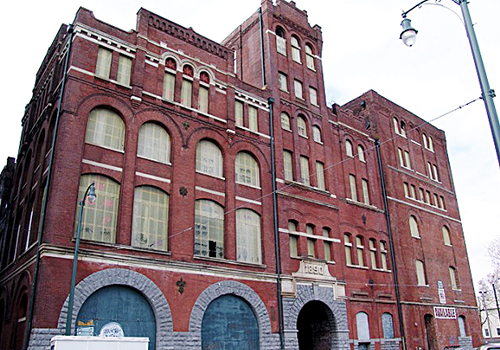For 20 years, I drove from Midtown to Downtown, five days a week, on Vance Avenue. The Flyer‘s offices were on the bluff near the Tennessee Brewery, and Vance was the most direct route from my house. It was a thoroughfare that had seen better days. There were still remnants of those days — a couple of big Victorian mansions, a once-posh-looking apartment building — but the street was scruffy, worn out. The only businesses were a small market plastered with “We Take EBT” signs and a couple of faded funeral homes.
As you neared Downtown, you passed Foote Homes, the city’s last public housing project. It always seemed to be the one place full of life on Vance, the yards and front stoops filled with people and activity. It had been rehabbed in recent years and seemed like a stable, family-friendly place.
When the Flyer moved its offices to Union and Front more than a year ago, I stopped driving down Vance and hadn’t seen it in months — until last Friday night, when we were headed to a friend’s house in South Bluffs.
What a change. Foote Homes is gone; a large, grassy vacant space is all that remains. Nearby, new apartments have sprung up on Vance, and new houses are being built just to the south. These are basically instant neighborhoods, homes created to house people of “mixed incomes,” we’re told. They look nice.
So where did the Foote Homes residents go? Scattered over the city, I suspect. The operative urban renewal theory being to break up “pockets of poverty.” So, eh, too bad if you live in one of the pockets. You gotta move.
The building boom is everywhere, especially in downtown and the center city. Near my house, a giant sign reading “The Citizen” now illuminates the night sky, proclaiming the presence of a new apartment complex at McLean and Union — with more apartment buildings to come in nearby blocks. A large, barn-like apartment building is provoking controversy and protest near Overton Square. “Tall skinny” houses are popping up like mushrooms in Cooper-Young, often to the dismay of neighboring home-owners. “Boom, boom, boom, boom,” as John Lee Hooker once sang.
 Jean-Luc Ourlin
Jean-Luc Ourlin
John Lee Hooker
So who’s moving in? And who’s being forced out by higher housing prices and disappearing single-family homes for rent? You can probably guess. It’s the age-old balancing act between encouraging investment and not displacing people from their homes — the gentrification dilemma. City leaders will increasingly have to deal with this problem as developers continue to jump into the now-hot Memphis market.
We have only to look 180 miles east to Nashville for a perfect case study. According to a recent affordability study by Numbeo.com, the average rent for a one-bedroom apartment in center city Nashville is now $1,529 a month. In Memphis, it’s currently $901. (That’s right.) That latter number will no doubt change as gentrification spreads, forcing lower-income folks to the margins — unless we do something about it. I suspect this issue will become a significant one in the 2019 mayoral contest.
The current administration’s Memphis 3.0 mantra is “Build Up, Not Out.” I get what they mean. The city has been hurt badly by urban sprawl. It’s geographically too large for its population. But Memphis leaders, now and whoever they may be in the future, will need to continue to pay close attention to make sure the gold-rush to redevelop the city’s core doesn’t come at the cost of forcing long-time residents out, and infesting established neighborhoods with make-a-quick-buck, poorly designed housing.
We should encourage and welcome the developers and investors who are putting their money into Memphis. Fresh financial resources are an important part of making a city vibrant. But the investors’ influence should align with the needs and wishes of the city’s residents. Their developments should respect the architectural integrity of our neighborhoods. And care must be taken to avoid chasing away long-time residents who have “paid their dues,” so to speak, by anchoring those neighborhoods before they became “investments.”
Unfortunately, too often those with the big bucks are the ones directing our cities’ urban revivals. We need to look to other “it” cities like Nashville and learn from their successes — and their mistakes.
